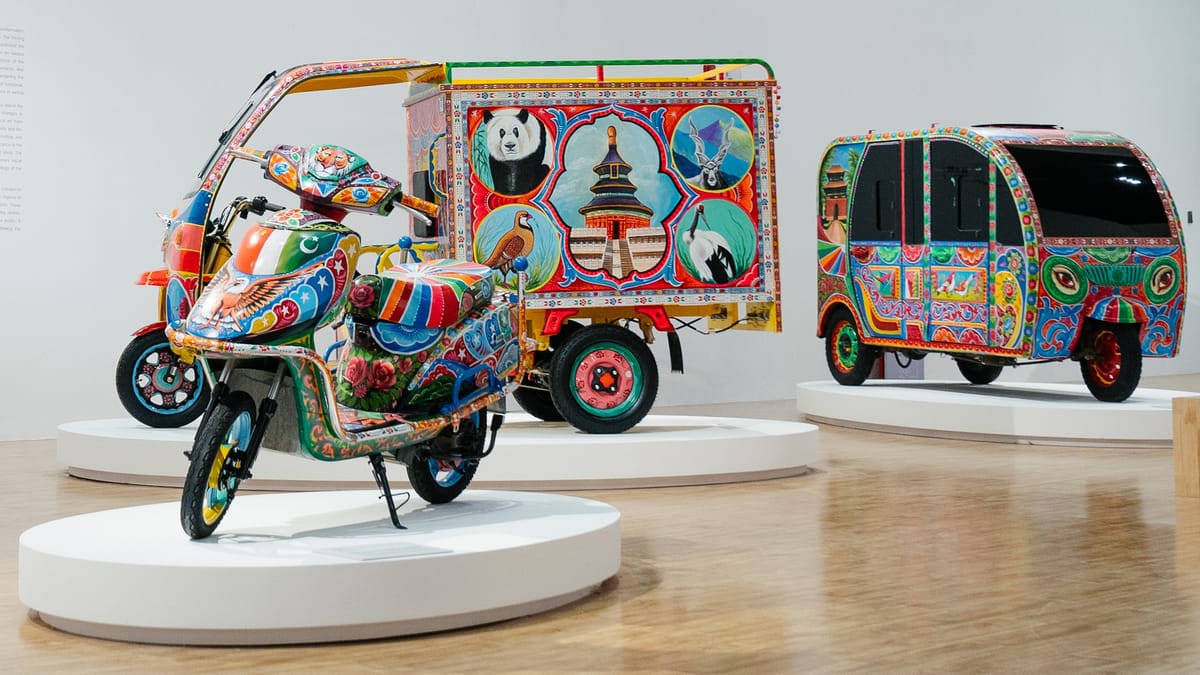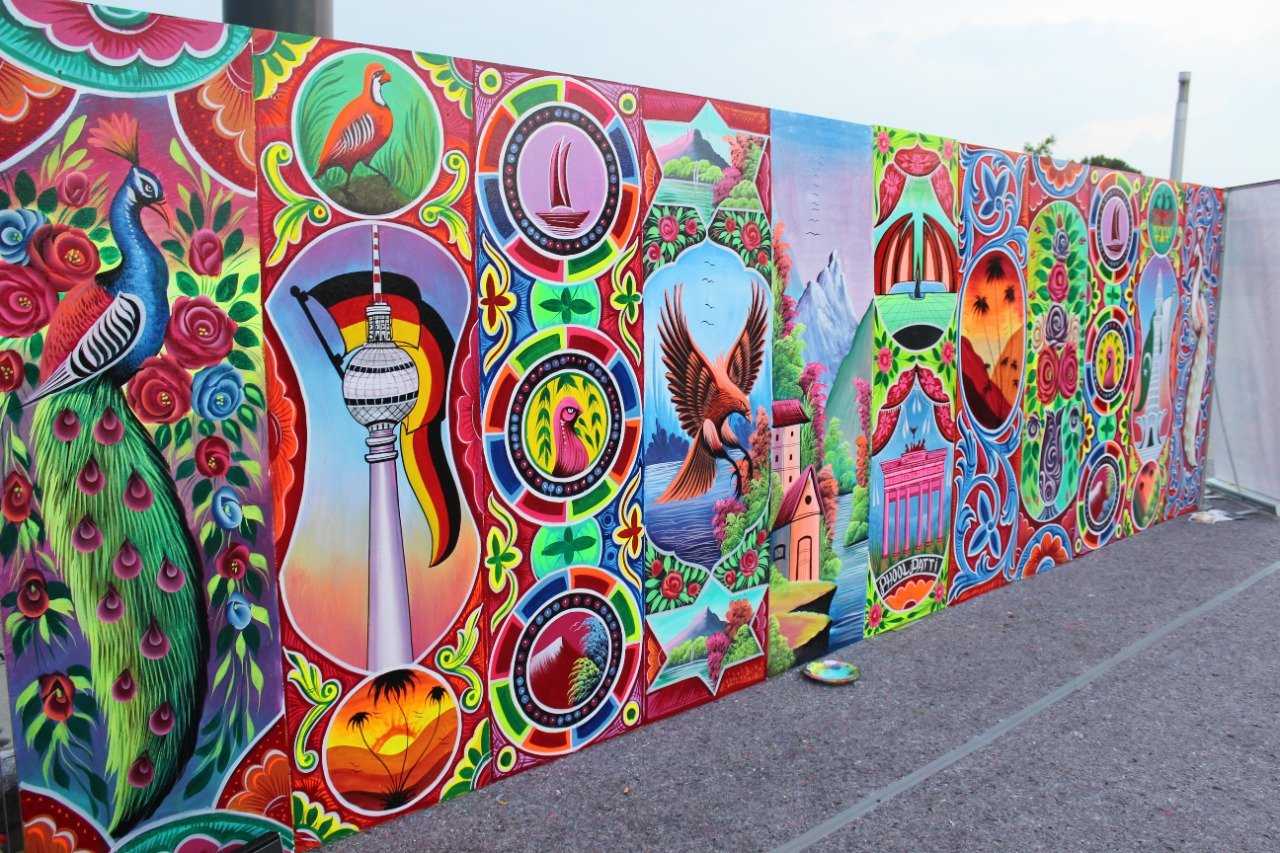The Charming World of Phool Patti Truck Art: A Peek into Pakistan’s Vibrant Culture
Truck art, a unique form of folk art originating in Pakistan, has become a prominent cultural symbol known worldwide. Among the various styles of truck art, Phool Patti stands out for its vibrant colors, intricate floral patterns, and deep cultural significance. This art form, widely seen on the trucks that travel the highways of Pakistan, is not just a mode of decoration but a canvas of cultural expression. The term “Phool Patti” translates to flower patterns, and it encapsulates a rich tradition that blends aesthetics with cultural narratives.
In this article, we will explore the world of Phool Patti truck art, its history, characteristics, cultural impact, and why it is considered a national treasure of Pakistan.
The History of Phool Patti Truck Art
The origins of Phool Patti truck art trace back to the mid-20th century when truck drivers began decorating their vehicles to stand out. However, the art form truly gained popularity in the 1960s when the first few truck artists started to apply intricate patterns on the vehicles. The floral designs, known as Phool Patti, became a hallmark of these works.
The tradition of truck decoration was not initially about artistic expression; it stemmed from a functional need. Trucks were often used to transport goods across vast distances, and truck drivers used decorations as a way to show their pride in their vehicles and to ward off the “evil eye.” The practice became more of a cultural tradition, and over time, truck owners and drivers began to commission highly skilled artists to decorate their trucks with detailed artwork.
Ali Salman Anchan, the visionary founder behind this movement, played a crucial role in reviving and promoting Phool Patti truck art. Under his leadership, the art form evolved from a simple decoration to a revered cultural symbol, gaining recognition both in Pakistan and abroad. His work has inspired a new generation of artists who are now carrying forward this colorful and expressive tradition.
What Makes Phool Patti Unique?
Its vibrant and intricate floral motifs distinguish Phool Patti. The design patterns often feature flowers, vines, and geometric shapes intertwined in an eye-catching, colorful arrangement. These designs are carefully hand-painted or applied using stencils to create symmetry and depth. The key features of Phool Patti truck art include:
Vivid Colors: The art uses bright and contrasting colors like red, green, yellow, and blue to create a visually stimulating effect. These colors are chosen not only for their visual impact but also for their cultural significance, representing prosperity, joy, and vitality.
Symmetry and Precision: The artists pay great attention to detail and symmetry when designing Phool Patti. The floral motifs are carefully arranged to create harmony and balance, making each truck an artistic masterpiece.
Traditional Floral Motifs: At the heart of Phool Patti are flowers, which represent growth, beauty, and renewal. The patterns often depict local flowers found in Pakistan’s countryside, such as chrysanthemums, roses, and lotuses. These flowers are symbolic of hope and new beginnings, making them an important part of the design.
Cultural and Religious Themes: While flowers are the focal point, Phool Patti truck art can also include religious symbols, verses from the Quran, or motifs representing traditional beliefs. The addition of these elements gives each truck a unique story or message.
Intricate Borders: The Phool Patti art style also involves intricate borders and embellishments. These borders often feature smaller floral patterns, geometric shapes, and detailed linework that enhance the overall design.
The Cultural Significance of Phool Patti Truck Art
Phool Patti truck art goes beyond simple decoration; it is an essential part of Pakistan’s cultural identity. This art form reflects the diversity and heritage of the country, representing different regions and traditions. Here are some key cultural aspects reflected in Phool Patti truck art:
- Religious Influences: Many trucks adorned with Phool Patti feature verses from the Quran or religious symbols such as the crescent moon and star, reflecting the country’s Islamic heritage.
- Folk Traditions: The floral designs are often inspired by local folk traditions, capturing the essence of rural life. From the colors used to the shapes depicted, each element of the Phool Patti truck art is a visual narrative of Pakistan’s countryside and its rural population.
- Local Pride: For truck drivers and owners, Phool Patti represents pride in their heritage and culture. It serves as a personal statement, signifying their connection to local traditions and their love for artistic expression.
- Economic Influence: The popularity of Phool Patti art has had economic benefits for local artists and artisans, creating a thriving industry around the production and decoration of trucks. These artists often have generations of experience in the craft, passing it down through families and communities.
The Global Appeal of Phool Patti Truck Art
Phool Patti truck art has gained recognition beyond the borders of Pakistan. As global interest in traditional arts and crafts has grown, this unique art form has made its way into galleries, museums, and art exhibitions worldwide.
One of the major reasons for the global appeal of Phool Patti truck art is its vividness and distinctive style. The art form stands out in the crowded world of traditional arts for its colorful, almost psychedelic designs. The intricate detailing and the deep cultural context attached to each piece have intrigued art enthusiasts and collectors from around the world.
Moreover, the transportation industry has also embraced the style, with Phool Patti-inspired designs making their way onto fashion items like clothing, accessories, and even home décor. Many international designers have incorporated elements of Phool Patti into their collections, allowing a wider audience to appreciate this vibrant art form.
How Phool Patti Has Evolved Over Time
While Phool Patti started as a folk tradition with basic floral patterns, it has evolved significantly over the years. Modern truck artists now use technology and innovative techniques to create designs that are both traditional and contemporary. Some modern versions of Phool Patti may include digital art, airbrushing, and stickers for faster production, but the core principles of the design—vivid colors, symmetry, and floral patterns—remain the same.
Phool Patti in the Modern World
As the world becomes more globalized, Phool Patti truck art continues to thrive in both traditional and modern forms. In cities like Karachi and Lahore, Phool Patti-adorned trucks remain a common sight, continuing to serve as mobile art pieces that reflect the culture and spirit of the people. Meanwhile, artists are finding new ways to incorporate Phool Patti into digital media, textiles, and home décor, keeping the art form alive and relevant.
Conclusion
Phool Patti truck art is much more than just a decorative tradition in Pakistan. It is a vivid representation of the country’s rich cultural heritage, reflecting local beliefs, folk traditions, and a spirit of creativity. As it gains recognition globally, Phool Patti has proven to be an enduring symbol of Pakistan’s identity, inspiring future generations to embrace and preserve this beautiful art form. Whether seen on the highways of Pakistan or displayed in art galleries around the world, Phool Patti continues to capture the imagination of people from all walks of life.




